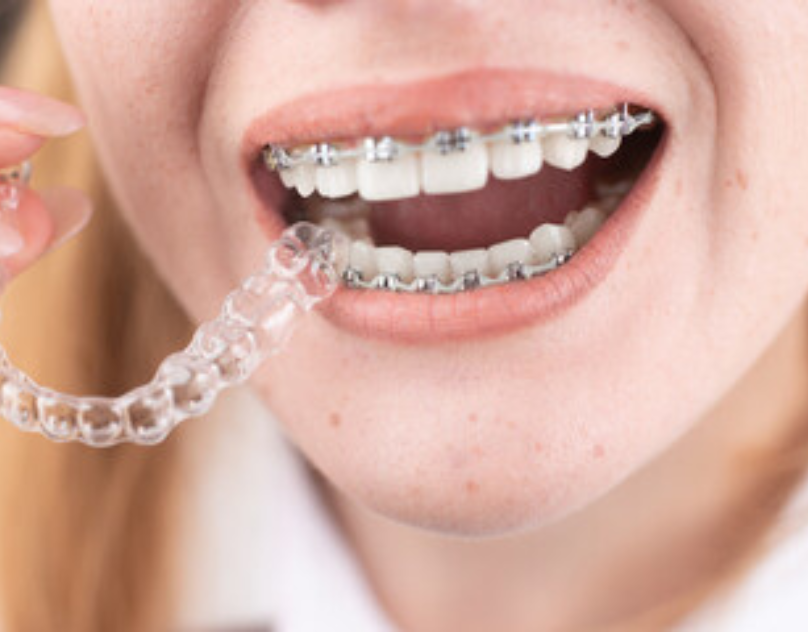Introduction
The journey to a straight and beautiful smile often begins with a crucial decision: should you choose clear aligners or traditional braces? This decision can significantly impact not only the outcome of yourOrthodontic treatment but also your comfort, appearance, and financial investment. To help you navigate this choice effectively, we'll explore various aspects of both options, including affordability, the differences between aligner brands, treatment speed, and strategies to minimize any discomfort associated with clear aligners treatment. By the end of this article, you'll be well-informed and better equipped to make the right orthodontic decision for yourself or your loved ones.
Choosing the Right Orthodontic Option
Selecting the right orthodontic option involves considering your individual needs and preferences. Here's a closer look at the factors that can influence your choice:
- Aesthetic Considerations: If discreet treatment is essential to you, clear aligners, like Invisalign, might be the preferred choice. They are nearly invisible, making them an attractive option for those concerned about appearance during treatment.
- Treatment Complexity: For complex orthodontic issues, traditional braces may be more effective. They can address severe misalignments and bite problems that aligners may struggle to correct.
- Maintenance: Dental aligners are removable, allowing for easier maintenance and oral hygiene compared to braces. However, this also requires the discipline to wear them consistently.
- Comfort: Aligners are known for their comfort as they lack the wires and brackets that can cause oral sores and irritation associated with traditional braces.
- Treatment Duration: Aligners can sometimes offer a shorter treatment duration compared to braces. However, this can vary depending on individual cases.
Are There Affordable Aligner Options?

Affordability is a significant concern for many considering orthodontic treatment. Here's what you need to know about the cost of aligners:
- Complexity of the Case: The cost of clear aligners treatment can vary depending on the complexity of your orthodontic issue. More challenging cases may require longer treatment and, consequently, higher costs.
- Aligner Brand: Different aligner brands come with varying price points. While Invisalign is well-known for its premium cost, other brands may offer more budget-friendly options.
- Insurance Coverage: Some dental insurance plans provide partial coverage for Orthodontic treatment which can help offset the cost of aligners.
- Financing Options: Many aligner companies offer financing plans to make the cost of treatment more manageable. This can be particularly beneficial if you're concerned about upfront expenses.
Invisalign vs. Other Aligner Brands
Invisalign is perhaps the most recognized brand of clear aligners, but there are alternatives. Here's a comparison:
- Invisalign:
- Known for its precision and customization.
- Offers various treatment options for different cases.
- Generally comes at a higher cost.
- ClearCorrect:
- Similar to Invisalign, offering a comprehensive solution for a range of orthodontic issues.
- May provide a more budget-friendly alternative.
- SmileDirectClub:
- Primarily caters to mild to moderate cases.
- Offers a more budget-friendly option compared to premium brands like Invisalign.
Aligner vs. Braces: Which Is Faster?
The speed of orthodontic treatment can be a crucial factor for many individuals. Here's a general comparison:
- Aligners are often associated with shorter treatment durations, typically ranging from 12 to 18 months for most cases.
- Braces, on the other hand, may require 18 to 24 months or more for completion, depending on the complexity of the treatment.
It's essential to consult with an orthodontist who can provide a more accurate estimate based on your specific case.
Minimizing Pain with Dental Aligners
Pain or discomfort is a common concern during Orthodontic treatment, but there are strategies to alleviate it:
- Over-the-Counter Pain Relief: Non-prescription pain relievers can help manage any initial discomfort when starting a new set of aligners.
- Orthodontist Guidance: Follow your orthodontist's instructions carefully to ensure your aligners are working correctly and not causing undue pain.
- Regular Check-ups: Scheduled check-ups with your orthodontist will help monitor your progress and address any issues promptly.
- Adaptation: Most people adapt to the feeling of aligners within a few days, and any speech issues or discomfort are usually temporary.
Conclusion
Choosing between dental aligners and traditional braces is a significant decision that requires careful consideration of your unique needs, preferences, and budget. Each option offers its own set of advantages, and your choice will impact the journey to your ideal smile. Consultation with an experienced orthodontist is essential to ensure you receive the most suitable treatment plan tailored to your individual requirements. Whether you opt for clear aligners or braces, remember that both paths lead to the confident, beautiful smile you've always dreamed of.
Frequently Asked Questions (FAQ)
- What are the main differences between dental aligners and braces?
- Dental aligners are clear, removable trays that are nearly invisible, while braces consist of brackets and wires.
- Aligners are known for their comfort and can be removed for eating and oral hygiene, whereas braces are fixed in place.
- Braces are highly effective for complex orthodontic cases, while aligners are ideal for mild to moderate issues.
- Which orthodontic option is more affordable: aligners or braces?
- The cost of orthodontic treatment varies based on factors like case complexity and aligner brand.
- Some dental insurance plans offer partial coverage for both clear aligners treatment and braces.
- Aligner companies often provide financing options to make treatment more affordable.
- Are there alternative aligner brands besides Invisalign, and are they cheaper?
- Yes, there are alternative aligner brands such as ClearCorrect and SmileDirectClub.
- These brands may offer more budget-friendly options compared to premium brands like Invisalign.
- How long does orthodontic treatment typically take with aligners and braces?
- Aligners generally offer shorter treatment durations, typically ranging from 12 to 18 months for most cases.
- Braces may require 18 to 24 months or more, depending on the complexity of the treatment.
- Is one option more comfortable than the other?
- Dental aligners are known for their comfort as they lack wires and brackets that can cause oral sores and irritation associated with braces.
- Most people adapt to the feeling of clear aligners within a few days, and any speech issues or discomfort are usually temporary.
- How can I minimize pain and discomfort during orthodontic treatment with aligners?
- Over-the-counter pain relievers can help manage any initial discomfort when starting a new set of aligners.
- Follow your orthodontist's instructions carefully to ensure your aligners are working correctly and not causing undue pain.
- Scheduled check-ups with your orthodontist will help monitor your progress and address any issues promptly.
- Is there a difference in treatment quality between aligners and braces?
- Both aligners and braces can provide excellent treatment results when administered by a qualified orthodontist.
- The choice between the two depends on individual needs, case complexity, and personal preferences.
- Can I switch from one orthodontic option to another if I'm not satisfied with my choice?
- It's essential to consult with your orthodontist before making any changes to your treatment plan.
- Transitioning between clear aligners treatment and braces may be possible in some cases, but it should be discussed with a professional.
- Will my dental insurance cover the cost of aligners or braces?
- Some dental insurance plans offer partial coverage for orthodontic treatment, including both aligners and braces.
- Check with your insurance provider to understand the extent of coverage available.
- Can adults consider orthodontic treatment with either aligners or braces? - Yes, both adults and teenagers can benefit from Orthodontic treatment with aligners or braces. - Age is not a limiting factor, and many adults choose orthodontic treatment to improve their smiles.
Visit : best clear aligner specialist in Thodupuzha
Author:
Dr.lavender James
Lavender James dental care journalist from Kochi, India. As a journalist and communications expert, I write and prepare case reviews, press releases and other articles that make dental practitioners the center of attention. I have been engaged in dental communication for more than 20 years as a journalist and PR expert – in addition to having many years of experience in dental practice and participation in ongoing advanced courses in journalism.



No comments yet